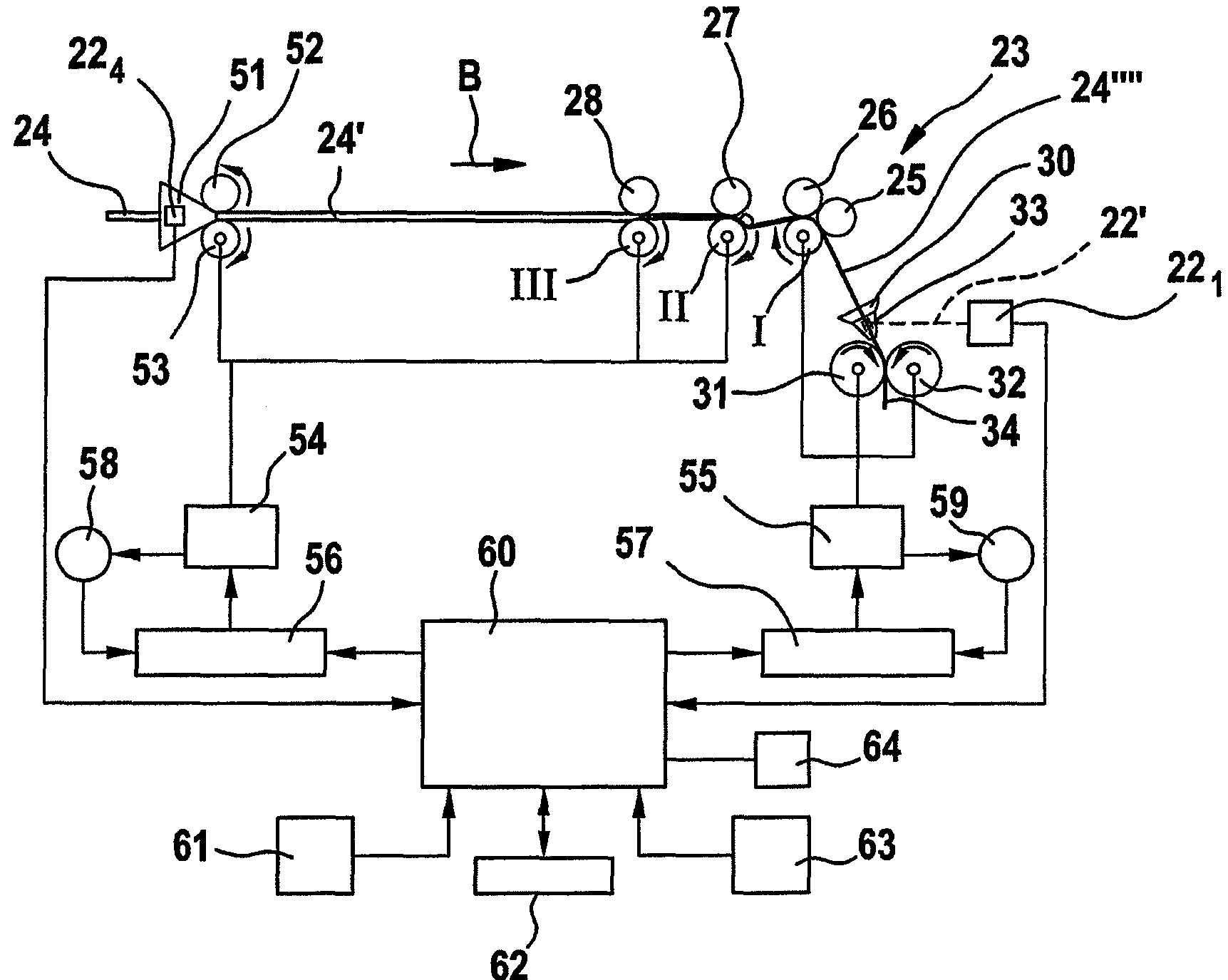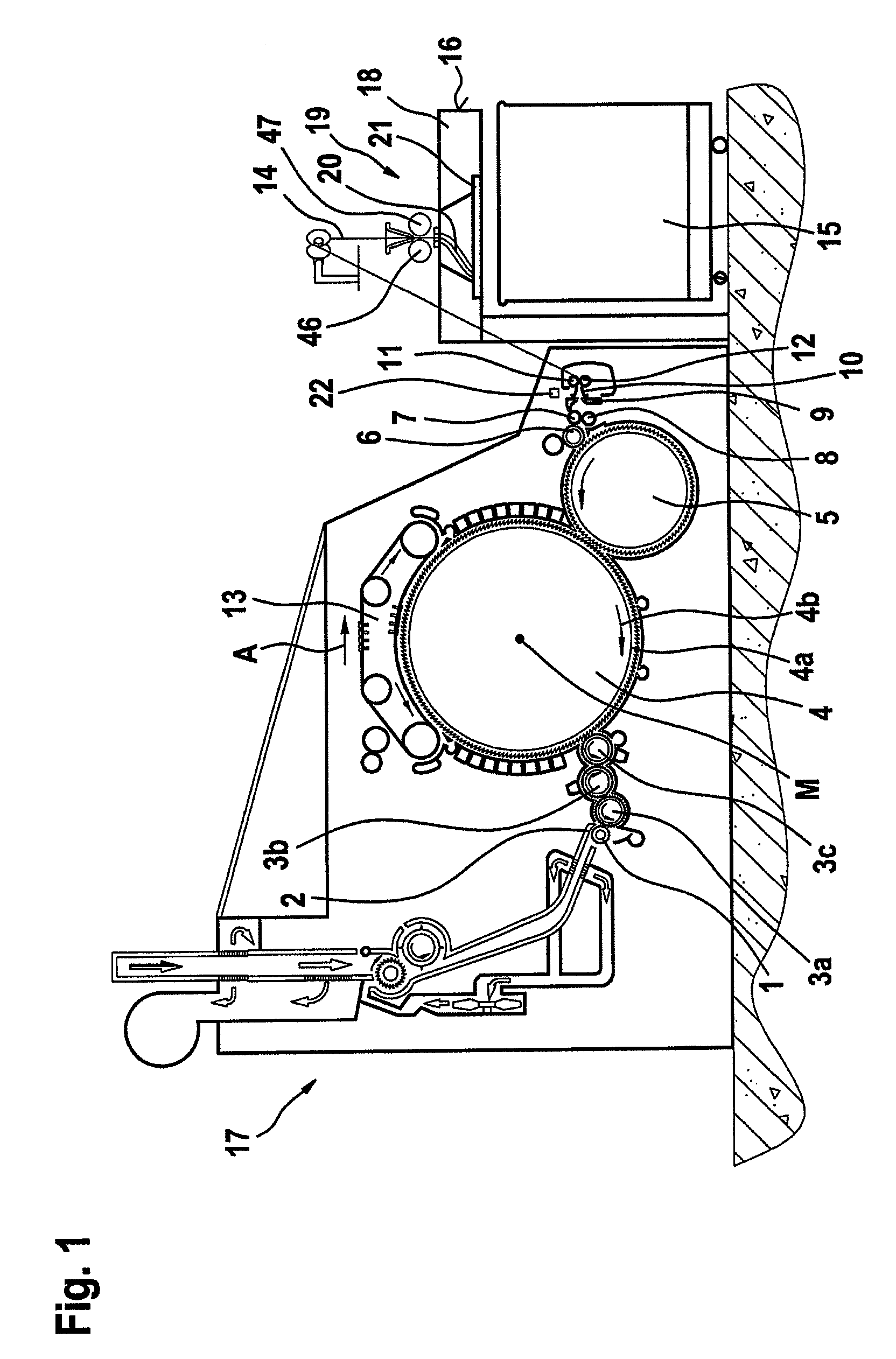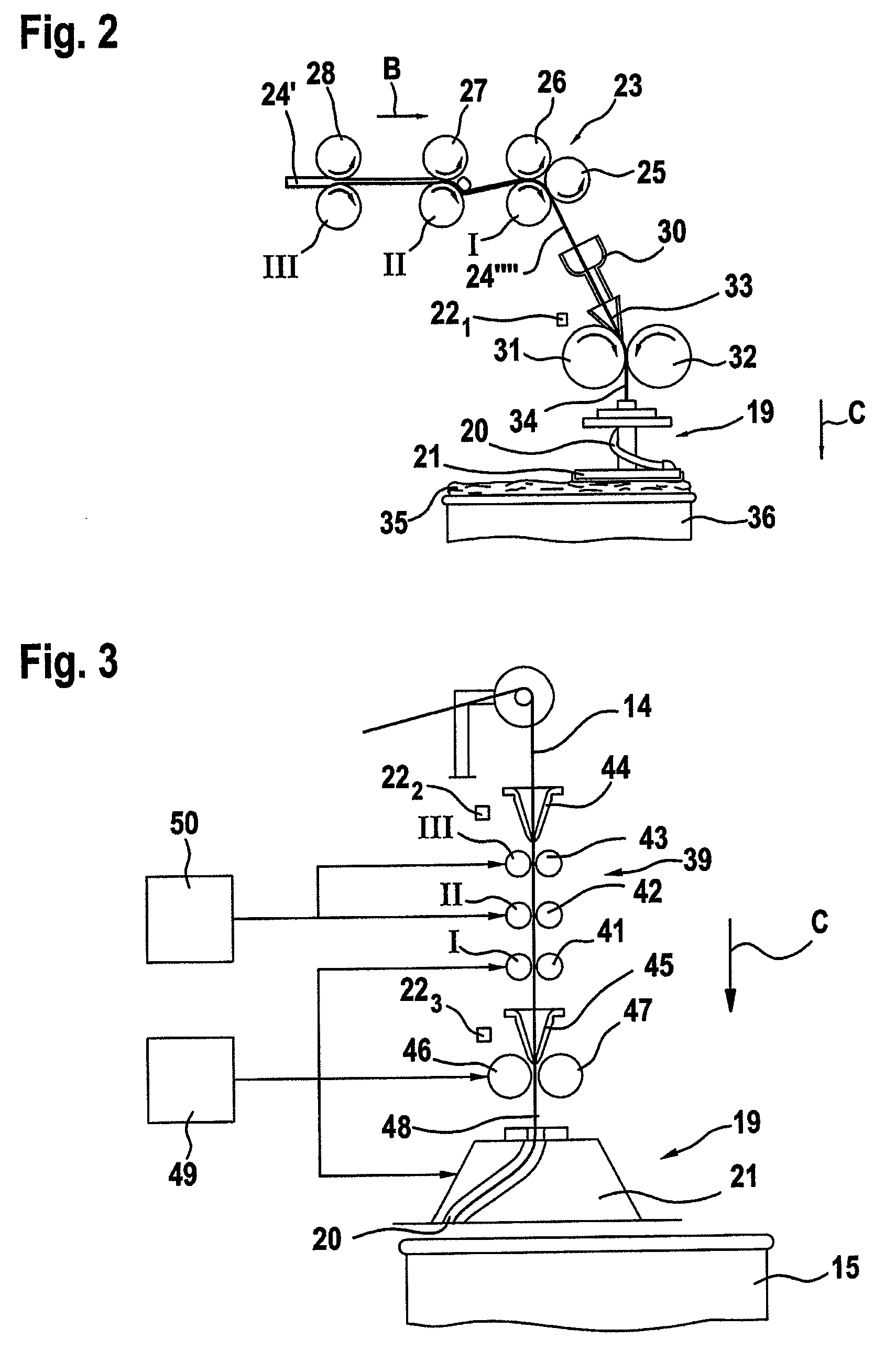Apparatus on a spinning preparation machine for ascertaining the mass and/or fluctuations in the mass of a fibre material
a preparation machine and apparatus technology, applied in the direction of fibre treatment, safety devices for fibre treatment, textiles and paper, etc., can solve the problems of insufficient space, inability to measure the mass of a given material, etc., to achieve improved and accurate measurement, small dimensions, and high frequency/cv values
- Summary
- Abstract
- Description
- Claims
- Application Information
AI Technical Summary
Benefits of technology
Problems solved by technology
Method used
Image
Examples
Embodiment Construction
[0035]FIG. 1 shows a flat card, e.g. a flat card known as TC03™ made by Trützschler GmbH & Co. KG of Mönchengladbach, Germany, having a feed roller 1, feed table 2, lickers-in 3a, 3b, 3c, cylinder 4, doffer 5, stripper roller 6, nip rollers 7, 8, web guide element 9, web funnel 10, delivery rollers 11, 12, revolving card top 13 with card top guide rollers and card flat bars, can 15 and can coiler 16. A fibre bundle passes through the web funnel 10, the fibre bundle entering in the form of a fibre web (not shown) and being discharged in the form of a card sliver 14. The directions of rotation of the rollers are indicated by curved arrows. Reference letter M denotes the centre point (axis) of the cylinder 4. Reference numeral 4a indicates the clothing and reference numeral 4b indicates the direction of rotation of the cylinder 4. Arrow A indicates the working direction. A tuft feed device 17 is arranged upstream of the flat card. The coiling plate 19 is rotatably mounted in the coilin...
PUM
| Property | Measurement | Unit |
|---|---|---|
| angle | aaaaa | aaaaa |
| mass | aaaaa | aaaaa |
| distances | aaaaa | aaaaa |
Abstract
Description
Claims
Application Information
 Login to View More
Login to View More - R&D
- Intellectual Property
- Life Sciences
- Materials
- Tech Scout
- Unparalleled Data Quality
- Higher Quality Content
- 60% Fewer Hallucinations
Browse by: Latest US Patents, China's latest patents, Technical Efficacy Thesaurus, Application Domain, Technology Topic, Popular Technical Reports.
© 2025 PatSnap. All rights reserved.Legal|Privacy policy|Modern Slavery Act Transparency Statement|Sitemap|About US| Contact US: help@patsnap.com



